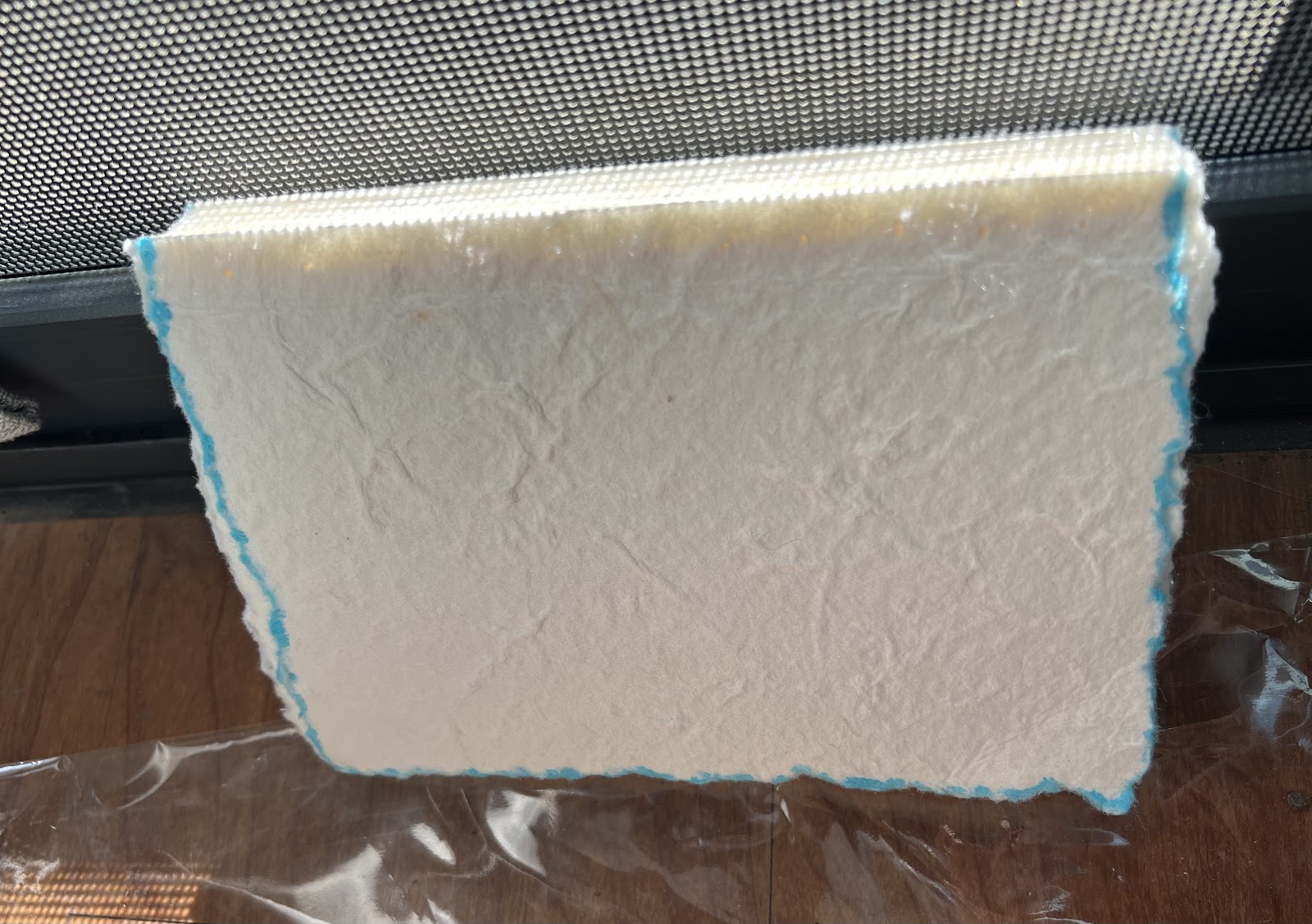Make my own sketchbook
Cover: coarse paper, dyed fabric, embroidery.
Inner page: Dongba paper
In the highly industrialized era, the precious thing is not materials, but traditional crafts and culture. From the cover to the inside page, I chose handmade paper, including my own dyed fabric and embroidery patterns.
The inner page of this sub-page is adhesive and cannot be replaced or added. I hope I can be frank with my thoughts in each period, and I hope they will not be changed.
I hope that my sketchbook can be completely recycled or decomposed after I use it, and all my ideas will be turned into a part of nature.
Initially, I wanted to make a book full of traditional flavor. I have always believed that making a notebook with plastic is not conducive to environmental protection, so I want to make a notebook that can be recycled after use or can be naturally decomposed. First, I will make the inside page of the book. This kind of paper is called "Dongba Paper", which is made by traditional paper-making techniques in Yunnan. When I bought them, they were cut very flat. But the flat paper has a strong artificial feeling. So I tore off the edges of the paper to create a sense of irregularity.

I have tried to punch holes, but the paper is too thick for the thread to pass through, so I still use the adhesive method. Stick up all the paper and dry it. (Here I originally painted the decoration on the edge of the paper, but I thought it was a little abrupt, so I tore these two pieces and made them again)
Then I tried to embroider the cloth. This step takes a lot of time. I didn't sew the whole cloth on the cover. I want to express a sense of unfinished, which means that I can have a lot of space to fill this book next.

Finally, I glued the inside pages of the notebook to the cover and made my own notebook.

Then in order to explore different materials, I made another cover. This cover is also made of recyclable materials. Even plastic bags, which can be seen everywhere, may become ornaments. I hope my entire sketchbook is also full of diversity.



















Comments
Post a Comment